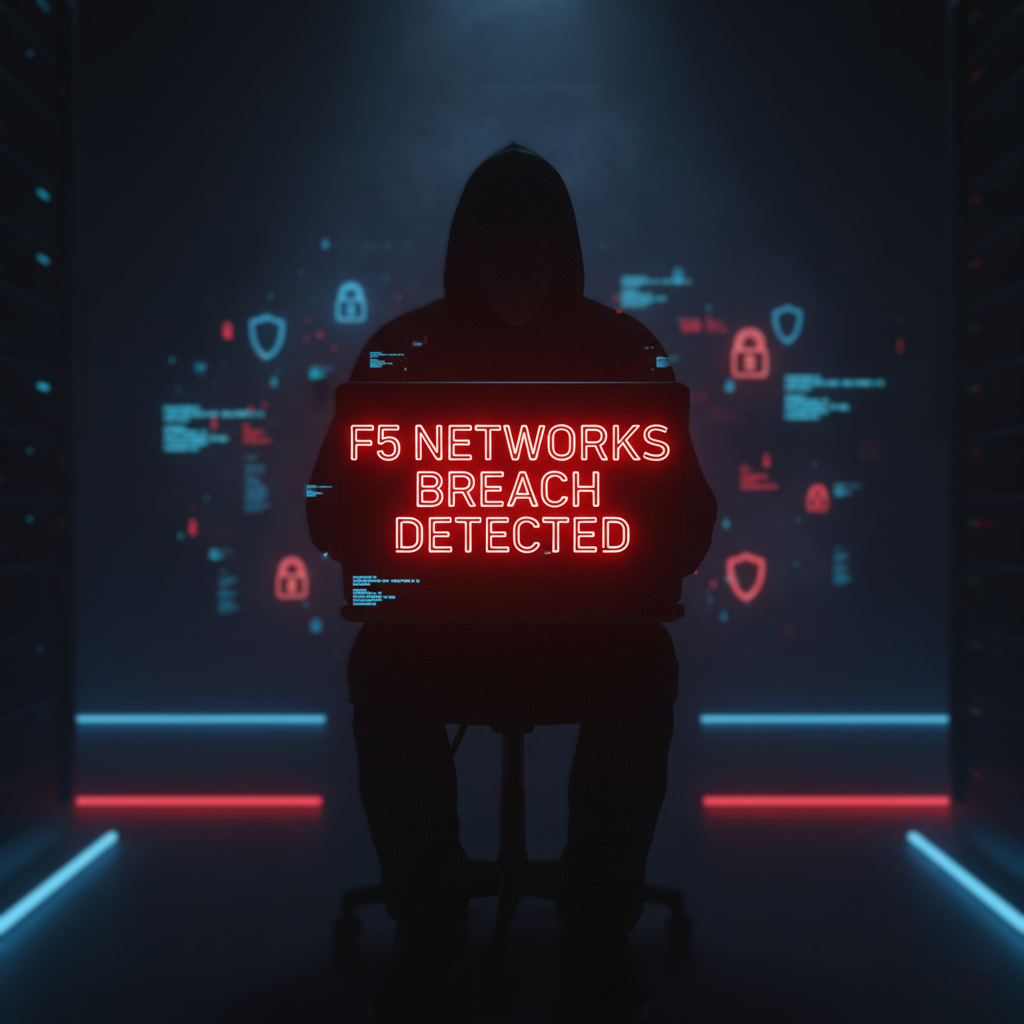Nation-State Cyberattack on F5 Networks: What Happened and Why It Matters
What Happened
In a shocking twist that sent ripples through the cybersecurity world, F5 Networks — the company trusted by governments, banks, and Fortune 500 enterprises to keep their systems secure — became a victim of a massive cyber breach in October 2025.
According to reports from Bloomberg and SiliconRepublic, the attack was carried out by a nation-state threat actor, most likely linked to China’s APT31 (Zirconium) — a sophisticated espionage group known for high-level intrusions.
F5 confirmed that the attackers gained unauthorized access to internal systems, stealing source code, internal vulnerability reports, and sensitive documentation tied to its flagship products — including BIG-IP and NGINX.
For those unfamiliar, F5’s BIG-IP systems sit at the heart of the internet — handling load balancing, traffic management, and security for thousands of organizations worldwide. In short, compromising F5 means having potential insight (or control) into a large portion of global infrastructure.
How the Attack Happened
The breach wasn’t a simple smash-and-grab — it was a carefully planned, multi-stage infiltration, the kind of operation only elite cyber units can pull off.
-
The Entry Point: Investigators believe the attackers started by stealing developer credentials through a targeted phishing campaign or exploiting an unpatched endpoint.
-
Inside the Network: Once inside, they escalated privileges by exploiting vulnerabilities in internal tools such as Jenkins and Confluence — both commonly used in software development pipelines.
-
Lateral Movement: The hackers moved quietly through F5’s network, eventually reaching its source code repositories and vulnerability tracking systems.
-
Data Exfiltration: Using encrypted channels, they siphoned off critical data — including BIG-IP source code — to remote servers based in Asia.
-
Persistence: To ensure long-term access, they reportedly deployed custom malware, possibly a modified ShadowPad backdoor, a tool previously linked to Chinese state-sponsored groups.
The breach went unnoticed for weeks until engineers detected unusual data traffic from internal developer environments.
Why It Happened
Unlike ransomware or data-theft gangs motivated by money, this was cyber espionage — pure and strategic.
1. Strategic Intelligence Gathering
F5’s products protect critical sectors — government, telecom, banking, defense, and cloud infrastructure. By infiltrating F5, attackers gain blueprints to global networks, allowing them to discover new vulnerabilities or plan future attacks on customers who rely on F5 devices.
2. Supply Chain Infiltration
This incident echoes the SolarWinds supply-chain hack — where compromising one trusted vendor gave attackers a pathway into thousands of client networks. Stealing source code opens the door to weaponizing updates or discovering zero-day flaws before anyone else does.
3. Geopolitical Advantage
The motive wasn’t money — it was power. Nation-state hackers collect digital intelligence to prepare for cyber warfare, economic leverage, and political influence. Owning the security backbone of major corporations gives them a long-term strategic edge.
Why This Breach Matters
This attack is a wake-up call to the entire cybersecurity community. If a company like F5 — built on protecting others — can be breached, it means no one is untouchable.
Here’s why this matters globally:
- Supply Chain Domino Effect: A single vendor breach can endanger thousands of customers.
- Exposed Source Code = Hidden Risks: Stolen code may reveal new vulnerabilities to be exploited later.
- Erosion of Trust: Every such attack weakens confidence in digital supply chains.
- Regulatory Impact: Governments may push stricter security mandates for software vendors.
This isn’t just a tech issue anymore — it’s a national security issue.
Final Thoughts
The F5 Networks breach is more than a cybersecurity headline — it’s a warning. It reminds us that even the most secure fortresses can fall when the attackers are patient, well-funded, and strategically motivated.
In a world where every line of code and every vendor connection matters, the new rule of cybersecurity is simple:
“Trust nothing. Verify everything. Monitor continuously.”
